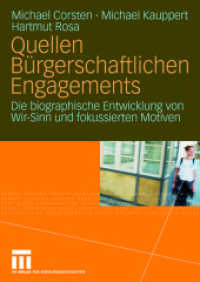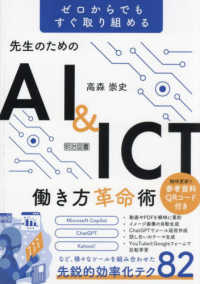- ホーム
- > 洋書
- > 英文書
- > Nature / Ecology
Full Description
Drylands account for three-quarters of Sub-Saharan Africa's cropland, two-thirds of cereal production, and four-fifths of livestock holdings. Today frequent and severe shocks, especially droughts, limit the livelihood opportunities available to millions of households and undermine efforts to eradicate poverty in the drylands. Prospects for sustainable development of drylands are assessed in this book through the lens of resilience, understood here to mean the ability of people to withstand and respond to droughts and other shocks. An original model was developed expressly to consistently and coherently evaluate different type of interventions on the ground, which provided a common framework to anticipate the scale of the challenges likely to arise in drylands, as well as to generate insights into opportunities for addressing those challenges.
Such modelling framework consisted in a) estimating the baseline vulnerability profiles of people living in drylands (2010), b) estimate the evolution of vulnerability by 2030 under a range of assumptions, c) calculated the number of people affected by drought in the different administrative units of each country, and d) evaluate different types of interventions in agriculture and livestock for mitigating drought impact by calculating the potential for reducing the number of people affected for each scenario and conducting a simplified · benefit/cost (B/C) analysis for each type of intervention.
For livestock, simulation models were used to estimate the impacts of feed balances, livestock production, and household income resilience interventions under different climate scenarios). For agriculture, the DSSAT (Decision Support System for Agrotechnology Transfer) framework was used to assess the potential impact on yields likely to result from adoption of five crop farming technologies: (1) drought-tolerant varieties, (2) heat-tolerant varieties, (3) additional fertilizer, (4) agroforestry practices, (S) irrigation (6) water-harvesting techniques and selected combinations thereof.








